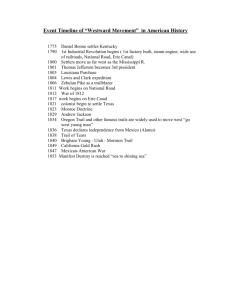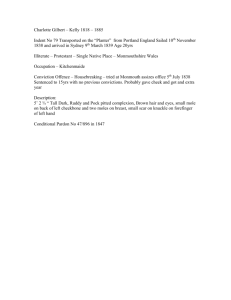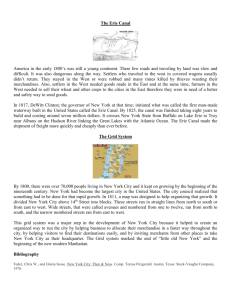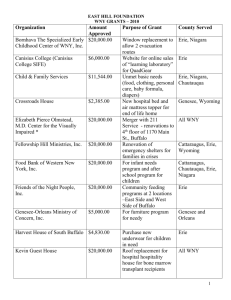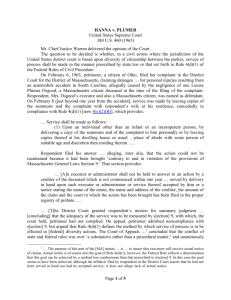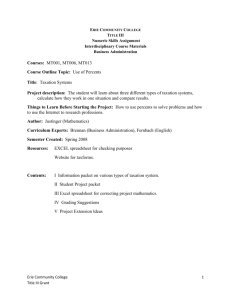The United States, 1838
advertisement
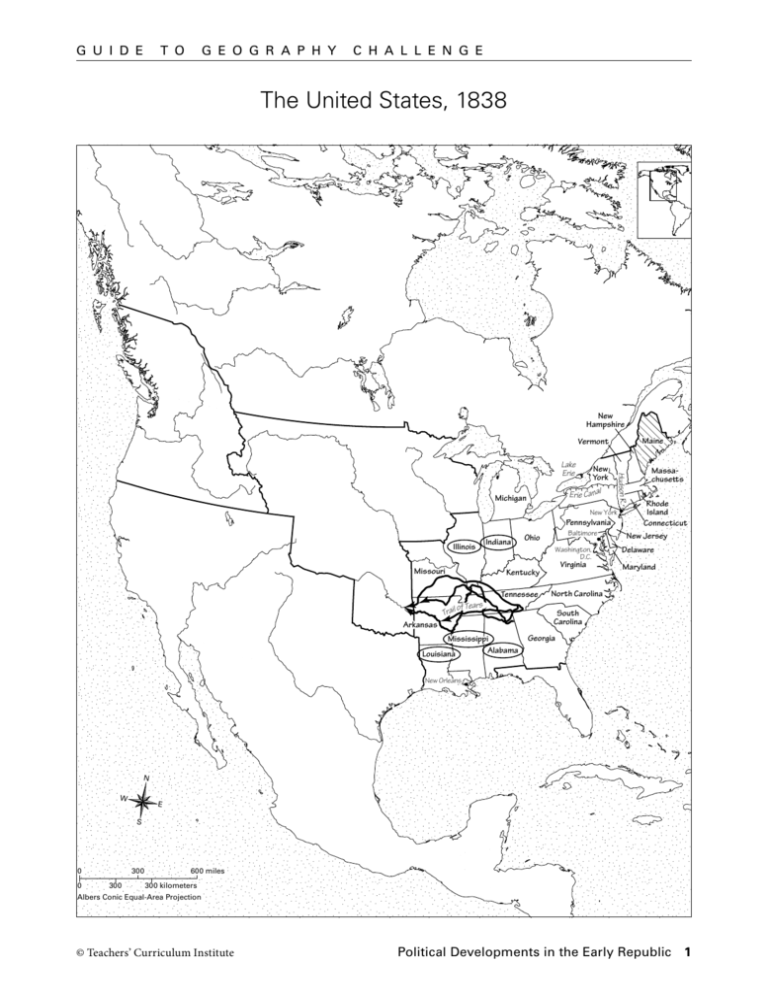
G u i de t o G e o gr a p h y C h a l l e n ge The United States, 1838 New Hampshire Maine Vermont New York Erie Ca nal Michigan Hudson R. Lake Erie New York Pennsylvania Illinois Missouri Indiana Baltimore Ohio Washington, D.C. Virginia Kentucky Tennessee l of Tears Trai Arkansas Mississippi Alabama Massachusetts Rhode Island Connecticut New Jersey Delaware Maryland North Carolina South Carolina Georgia Louisiana New Orleans N W E S 0 300 600 miles 0 300 300 kilometers Albers Conic Equal-Area Projection USI_LG_U04_01 The United States, 1838 Third Proof © Teachers’ Curriculum Institute TCI19 79 Political Developments in the Early Republic 1 G u i de t o G e o gr a p h y C h a l l e n ge Geography Skills growing population in the West. Score 1 point for each correct answer. Use the map on the previous page to check shading and labeling. 11.Answers and opinions will vary. The Cherokee were removed to free up the land for white settlers. 1. There were 13 new states added from 1791 to 1838, for a total of 26. Using Scores to Inform Instruction 2. Five new states—Louisiana, Indiana, Mississippi, Illinois, and Alabama—were admitted during the 1810s, the most of any decade. 3. Maine was the only state added to the Union in the early 1800s that is not west of the Appalachians. 4. New York City was the nation’s capital when Washington became president. 5. These two cities were among the places attacked by the British in the War of 1812. The United States had a problem with Great Britain. 6. The Erie Canal connected Lake Erie and the Hudson River. 7. Tennessee is the home state of Andrew Jackson. 8. The Cherokee were forcibly moved west along the Trail of Tears. It began around northwestern Georgia and ended west of Arkansas. Geography Skills A score of 6 out of 8 or better indicates that students have acquired sufficient geographic information to proceed with the unit. Critical Thinking A score of 6 out of 9 or better indicates that students are beginning to understand the relationships between physical geography and the different ways in which people live. Modifying Instruction ELL or Learners with Special Education Needs Consider focusing on map-reading questions or limiting the number of “Critical Thinking” questions. Students with Weak Map or Critical Thinking Skills Assign appropriate pages from the Social Studies Skills Toolkit in the back of the Lesson Masters. Critical Thinking Questions may have more than one correct answer. Score 1 to 3 points for each reasonable answer, depending on the strength of students’ geographic reasoning. Possible answers are given here. 9. Possible answer: An event like the War of 1812, with the threats to the homeland that it presented, might serve to unite Americans and increase their sense of patriotism. 10.Jackson was the nation’s first president not from an eastern state. His election might not have succeeded without the support of a © Teachers’ Curriculum Institute Political Developments in the Early Republic 2
